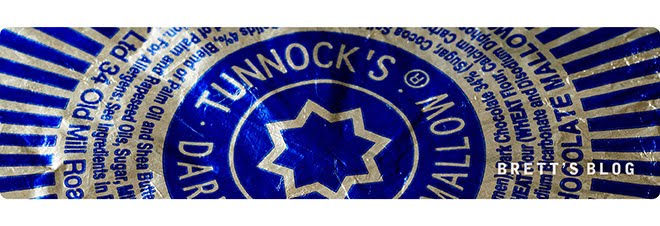Digital Photography Review reports: [edited]
When the iPhone Photography Awards were established in 2007, the first iPhone had just been released and its 2MP images were... well, they were nothing to write home about. Fast-forward to 2017, and the winners of this year's 10th annual IPPAs are stunning, taking full advantage of a decade's technological advancement.
[Ed. One of the article’s comments sums things up nicely: "My first 35mm camera was a Konica Auto S2 purchased at a PX in Vietnam in 1966 for $35. Still have it, still works. My iPhone 7+ takes photos of comparable IQ, fits in a shirt pocket, always with me, has date and time, GPS data, and can be transmitted instantly. Also movies, panorama, HDR. Memory cards support near infinite capacity. Apps provide PP, and EXIF info."]
Wednesday, June 28, 2017
Tuesday, June 20, 2017
Microsoft’s AI is first to reach a perfect Ms. Pac-Man score
The Verge reports: [edited]
The perfect score for arcade classic Ms. Pac-Man has been achieved. Maluuba — a deep learning team acquired by Microsoft — has created an AI system that’s learned how to reach the game’s maximum point value of 999,900 on Atari 2600, using a unique combination of reinforcement learning with a divide-and-conquer method.
Although AI has conquered a number of retro games, Ms. Pac-Man has remained elusive, due to the game’s lack of predictability. Maluuba tasked out responsibilities to over 150 agents. The team then taught the AI using what they call Hybrid Reward Architecture — a combination of reinforcement learning with a divide-and-conquer method. Individual agents were assigned piecemeal tasks — like finding a specific pellet before working in tandem with other agents to achieve greater goals. Maluuba then designated a top AI agent that took suggestions from the other agents in order to inform decisions on where to move Ms. Pac-Man.
The best results came when individual agents “acted very egotistically” and the top agent focused on what was best for the overall team, taking into account not only how many agents wanted to go in a particular direction, but the importance of that direction. (Example: fewer agents wanting to avoid a ghost took priority over a higher amount of agents wanting to pursue a pellet.) “There’s this nice interplay,” says Harm Van Seijen, a researcher with Maluuba, “between how they have to, on the one hand, cooperate based on the preferences of all the agents, but at the same time each agent cares only about one particular problem. It benefits the whole.”
------------
The perfect score for arcade classic Ms. Pac-Man has been achieved. Maluuba — a deep learning team acquired by Microsoft — has created an AI system that’s learned how to reach the game’s maximum point value of 999,900 on Atari 2600, using a unique combination of reinforcement learning with a divide-and-conquer method.
Although AI has conquered a number of retro games, Ms. Pac-Man has remained elusive, due to the game’s lack of predictability. Maluuba tasked out responsibilities to over 150 agents. The team then taught the AI using what they call Hybrid Reward Architecture — a combination of reinforcement learning with a divide-and-conquer method. Individual agents were assigned piecemeal tasks — like finding a specific pellet before working in tandem with other agents to achieve greater goals. Maluuba then designated a top AI agent that took suggestions from the other agents in order to inform decisions on where to move Ms. Pac-Man.
The best results came when individual agents “acted very egotistically” and the top agent focused on what was best for the overall team, taking into account not only how many agents wanted to go in a particular direction, but the importance of that direction. (Example: fewer agents wanting to avoid a ghost took priority over a higher amount of agents wanting to pursue a pellet.) “There’s this nice interplay,” says Harm Van Seijen, a researcher with Maluuba, “between how they have to, on the one hand, cooperate based on the preferences of all the agents, but at the same time each agent cares only about one particular problem. It benefits the whole.”
------------
Wednesday, June 14, 2017
Coolar - Solar Powered Refrigeration
Coolar reports: [edited]
The Coolar system uses warm water generated through solar energy. It has no moving parts, hazardous cooling fluids or lubricants.
It employs the following cooling cycle...
1. Evaporation: Part of the water evaporates in the evaporator due to low pressure in the system. The resulting evaporation cooling effect cools the storage compartment.
2. Adsorption: An adsorbent binds the water vapour to its surface and frees up space in the evaporator, allowing more water to evaporate, multiplying the cooling effect.
3. Drying: When the adsorbent’s surface is saturated, cooling temporarily pauses.
4. Condensation: By heating, the adsorbent is dried and vapour is released from its surface. The vapour condenses and flows back into the evaporator.
------------
The Coolar system uses warm water generated through solar energy. It has no moving parts, hazardous cooling fluids or lubricants.
It employs the following cooling cycle...
1. Evaporation: Part of the water evaporates in the evaporator due to low pressure in the system. The resulting evaporation cooling effect cools the storage compartment.
2. Adsorption: An adsorbent binds the water vapour to its surface and frees up space in the evaporator, allowing more water to evaporate, multiplying the cooling effect.
3. Drying: When the adsorbent’s surface is saturated, cooling temporarily pauses.
4. Condensation: By heating, the adsorbent is dried and vapour is released from its surface. The vapour condenses and flows back into the evaporator.
------------
Thursday, June 01, 2017
Guggenheim publishes art books online
The Guggenheim Museum has made over 200 significant works from its collection available. Enjoy!
------------
------------
Subscribe to:
Posts (Atom)




